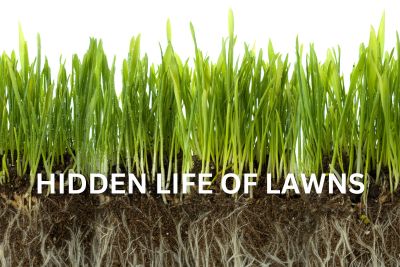For many lawn enthusiasts, winter can feel like a time of waiting. But beneath the frost and snow, fascinating changes are happening in your lawn. Understanding the science of grass growth during winter can help you plan for a healthier, greener lawn come spring. It’s important to note that winter lawn care practices vary significantly by region and grass type.
- Dormancy: The Lawn’s Hibernation Mode
-
- What Happens: As temperatures drop, most cool-season grasses—like Kentucky bluegrass and fescue—enter dormancy. Growth slows, and the lawn focuses on conserving energy. Warm-season grasses, such as Bermuda and Zoysia, enter a complete dormancy during winter and turn brown.
- Why It Matters: Dormancy protects grass from harsh winter conditions and prepares it to bounce back when temperatures rise.
- Roots Stay Active (Cool-Season Grasses)
-
- Underground Activity: While the blades of cool-season grasses may not grow, their roots continue to gather nutrients and moisture. In regions with dry winters and little to no snow cover, occasional watering may be necessary to prevent desiccation of the roots. This is not the case for warm-season grasses which do not require watering during dormancy.
- Preparation Tip: If your lawn has compacted soil, aerate it after the last mowing of the season, ideally when the soil is moist. Core aeration is generally preferred over spike aeration.
- Winter Weeds and Pests
-
- Threats: Some weeds, like poa annua, and pests, like voles, remain active in colder months. The timing of pre-emergent herbicide application will depend on the specific weed and your local climate.
- Prevention: Use pre-emergent herbicides in late fall (after soil temperatures consistently drop below 50°F or as recommended by your local extension office) and remove large debris like fallen branches from the lawn. A thin layer of mulched leaves can be beneficial, providing nutrients as they decompose.
- Snow Mold and Lawn Diseases
-
- What to Watch For: Snow mold can appear as pink or gray patches on the lawn once the snow melts.
- Prevention: Avoid heavy thatch buildup. Rake leaves before winter, or if you prefer to mulch, ensure they are finely chopped with a mower so they decompose quickly and don’t create a dense layer.
- Planning for Spring
-
- What You Can Do Now: Test your soil’s pH and nutrient levels, ideally in the fall or early spring. This will help you determine if amendments like lime are needed to balance the pH or if fertilizer is needed to address nutrient deficiencies. Plan for early fertilization in the spring to jumpstart growth.
- Bonus Tip: Sharpen your mower blades in winter so they’re ready to go for the first mow of spring.
Understanding what’s happening in your lawn during winter ensures you’re ready to hit the ground running when mowing season returns.

